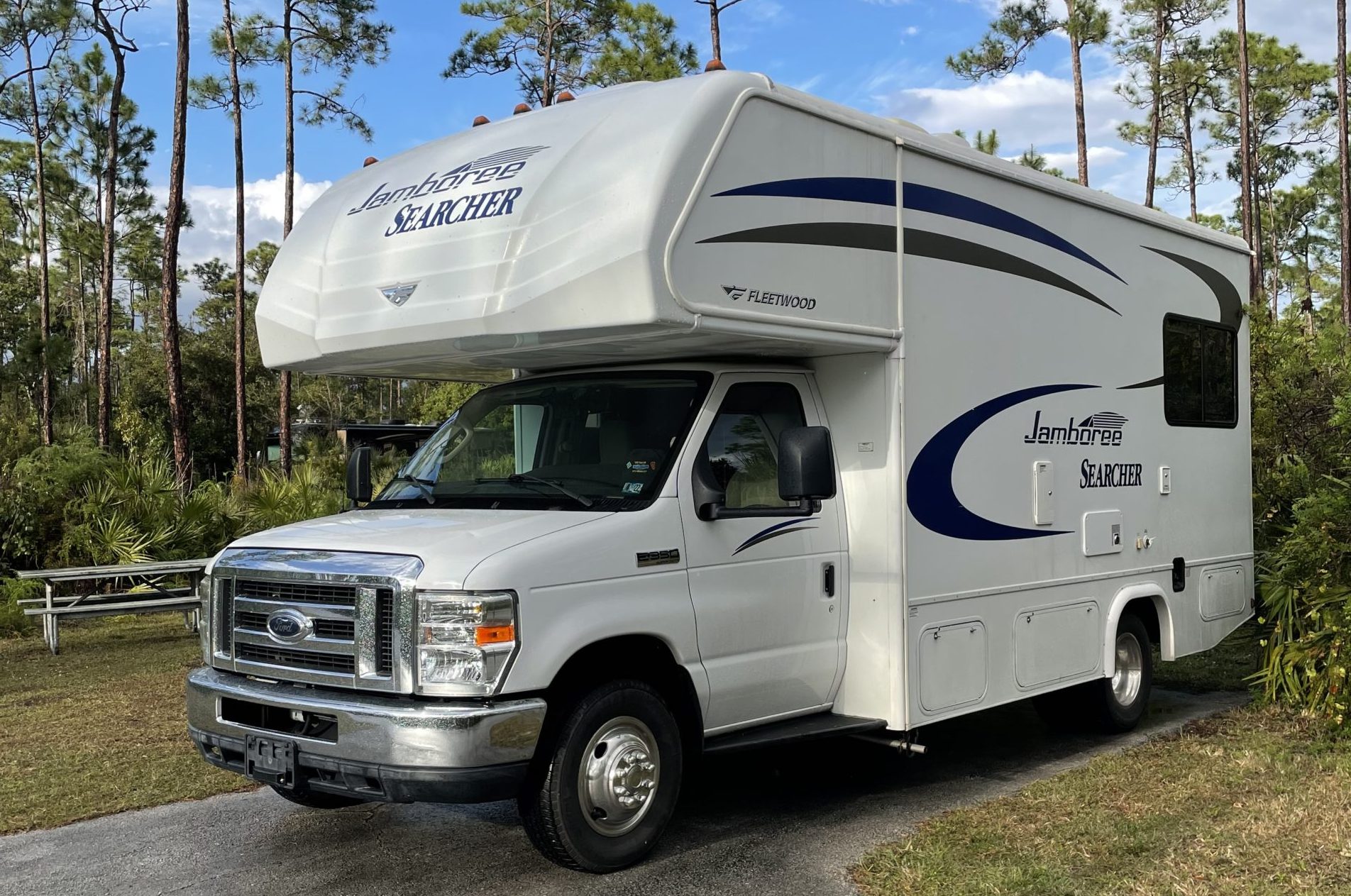Where Do You Store a Motorhome?
After we bought our RV, the next obvious question we asked ourselves was this. “Where the heck are we going to park it when we aren’t traveling?”
To be fair, we had given that question a little thought previous to our purchase. I had called around to a few local places that store RVs and found out that they charge by the foot. On one hand, the RV would be in a safe place, but on the other hand, we wouldn’t have immediate and convenient access to it. And that was something important to us for all the “tinkering” we expected to be doing.
We then called our local zoning department to find out the regulations regarding parking a motorhome at our residence, or even if it was allowed in our city. Lucky for us, we were told that if you have a garage at the end of your driveway (which we do), then you may park it in your driveway. This was great except for the fact that we wouldn’t be able to get the car in and out of the garage.
Next idea. Find a place in the backyard. We learned that this was allowed as long as we had a designated space of not more than 300 sq ft and we didn’t use pavement or concrete because of potential drainage issues. Okay, now we’re on a roll!
After taking a long look around our yard and using our tape measure and imagination, we chose a place where we currently had a shed, bordered by a row of hemlock trees, bordered by an alley. We realized this was going to take some work.
Dismantling the shed was easy-peasy for Walt, but the hemlock trees were another animal entirely. Fortunately, we have a very good friend who was extremely generous with his time, energy, and a piece of equipment called a skid steer. After hiring an expert to trim down the trees to about four feet, the real fun began! Chains were wrapped around the tree trunks and then the skid steer, with a lot of coaxing, pulled them out of the ground. Let me tell you, that was impressive to watch!
Because our yard slopes down toward the house a bit, the next step was to build a little retaining wall of 6×6 treated lumber, backfill it in, level it out, then finish it off with a few truckloads of gravel.
Finally, we trimmed some low-hanging branches from a nearby maple tree to allow our almost 12’ high Class C to pull in without a scratch. Now our RV finally had its new home – right in our own backyard! It was a lot of planning, and a lot of sweat-equity to get this accomplished, but it turned out pretty much exactly as we’d hoped.
The takeaway is, if you are buying an RV and don’t plan on living in it full-time, do your research on the rules and regulations about parking an RV in your area, and also think about what makes sense for you. We knew that we wanted to make improvements to our rig and have it handy, so it was worth the extra effort and expense to make our parking spot happen. But if you just need a place to let it rest until your next adventure, then paying to store it at a trusted facility may just be your ticket.
Now, on to that “tinkering”!








